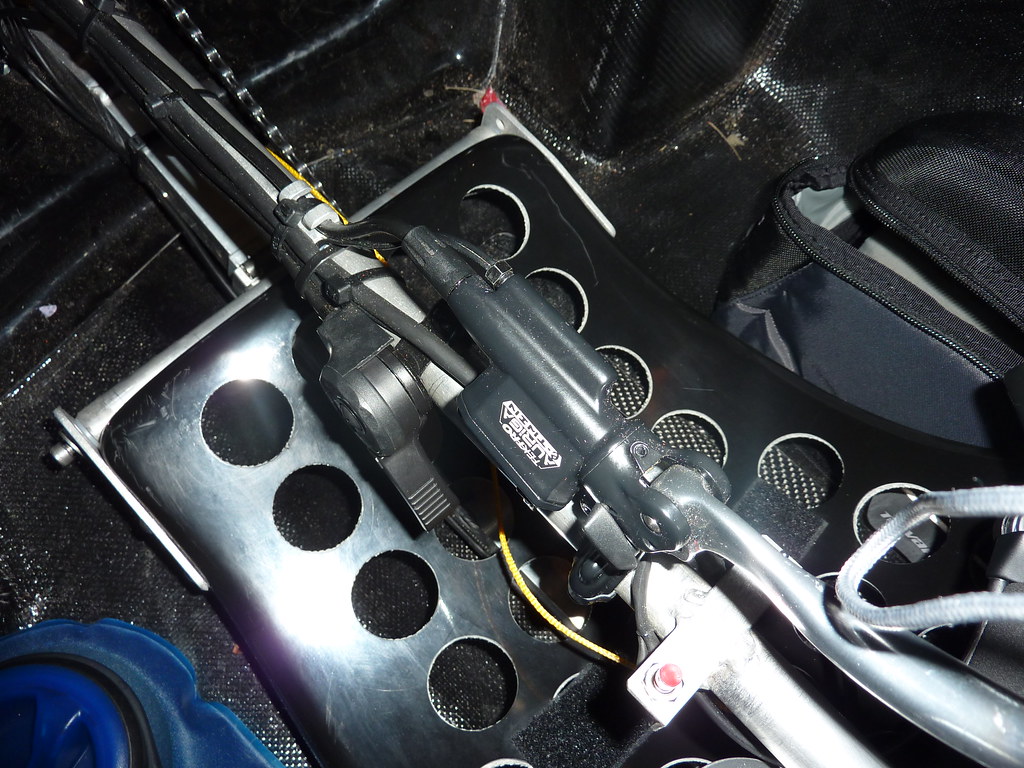
We’ve all been there, right? That moment you spot a car, whether on the lot or in a sleek advertisement, and something just clicks. Maybe it’s the aggressive stance, the promise of a chic interior, or the badge itself that whispers tales of engineering prowess. You envision glorious road trips, effortless commutes, and perhaps even turning a few heads as you cruise by. This is the dream, the romantic ideal of car ownership that keeps us all coming back for more, year after year, model after model.
But as any seasoned gearhead or even a casual observer knows, the reality can often be a harsh, sputtering awakening. Sometimes, what looks good on paper or in a glamorous marketing shot utterly fails to deliver where it counts: behind the wheel. We’re talking about those vehicles that, despite their initial appeal or seemingly practical advantages, simply miss the mark, leaving owners with a nagging sense of ‘what if?’ and a general feeling of automotive malaise. It’s not about outright failure, but rather a profound disappointment that stems from unfulfilled potential, a car that promises a symphony but delivers a flat note.
Today, we’re strapping in for an unapologetically honest look at some of these recent offerings, cars that, for various reasons, have managed to break their owners’ hearts. We’ve dug through firsthand impressions, scrutinized expert reviews, and even sifted through the often-fiery customer feedback to understand why these particular models have fallen short. We’ll be dissecting everything from questionable powertrain choices to baffling design compromises, all to understand why, despite some superficial appeal, these vehicles just don’t stack up in the real world of driving. So buckle up, because we’re about to explore the bittersweet truth of cars that looked good, but ultimately drove bad.
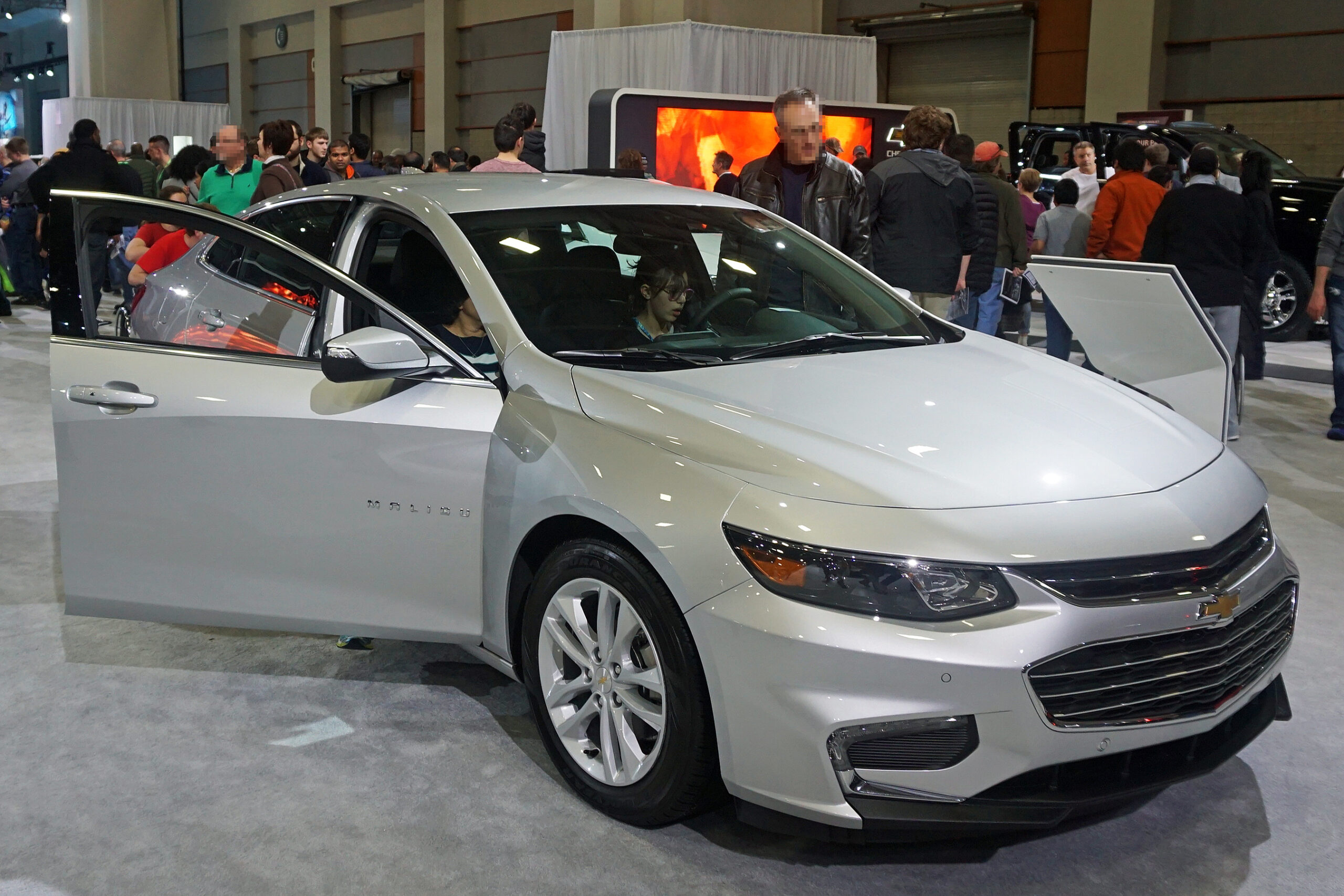
1. **Chevrolet Malibu**The Chevrolet Malibu has long been a staple, a familiar face in the midsize sedan segment, often seen blending into rental fleets or quietly commuting on suburban highways. To its credit, the Malibu is an enjoyable car in the most basic sense, delivering a soft, composed ride and a quiet cabin that makes it well-suited for those long, uneventful highway drives. The design, while not exactly cutting-edge, has a certain understated elegance, a clean profile that doesn’t offend, even if it feels more at home in a rental lot than gracing a 2025 showroom floor.
Yet, for all its pleasantries, the Malibu feels like a car stuck in a time warp. It hasn’t seen meaningful updates in what feels like an automotive eon, making it feel utterly stale compared to literally any competitor worth its salt. The infotainment system, while functional and straightforward, is happy to simply mirror your smartphone, showing absolutely no ambition to innovate or truly engage. Inside, the materials are simply there; they get the job done but lack any real sense of occasion, unless your idea of a design statement is “that’s a lot of gray plastic.” It’s a testament to how far other sedans have come that the Malibu feels so stubbornly rooted in the past.
Under the hood, the 1.5-liter turbocharged four-cylinder engine churns out a modest 163 horsepower, which does translate to solid fuel economy, hovering around 30 MPG combined. However, performance, or rather, the lack thereof, is as leisurely as waiting for dial-up internet to connect. Merging onto a busy highway becomes an exercise in patience and careful planning, as the car simply doesn’t have the verve to keep up with modern traffic flows. Crucially, with no hybrid option available, the Malibu feels like it has missed its final opportunity to stay relevant in a rapidly evolving segment that increasingly prioritizes efficiency and immediate power delivery.
The Malibu’s downfall isn’t that it’s a terrible car, but that it’s merely *adequate* in a world that demands more. It’s dependable and comfortable, yes, but it’s also a stark reminder that even once-staple sedans can fade quietly into the background. Its outdated platform and lack of innovation place it squarely behind nearly every other midsize sedan, from a Honda Accord to a Toyota Camry, both of which would probably leave it in the dust trying to merge onto the highway. It’s a car that, despite its palatable looks, offers little to genuinely excite or satisfy a driver looking for anything beyond basic, uninspired transportation.
Car Model Information: 2023 Chevrolet Malibu FWD 1LT
Name: Chevrolet Malibu
Manufacturer: Chevrolet
ModelYears: 1964–1983,1997–2025
Class: Mid-size car
Layout: Front-engine, rear-wheel-drive layout
Predecessor: Chevrolet Chevelle
Successor: Chevrolet Celebrity
Caption: Ninth generation Chevrolet Malibu
Categories: 1970s cars, 1980s cars, 1990s cars, 2000s cars, 2010s cars
Summary: The Chevrolet Malibu is a mid-size car that was manufactured and marketed by Chevrolet from 1964 to 1983 and from 1997 to 2025. The Malibu began as a trim-level of the Chevrolet Chevelle, becoming its own model line in 1978. Originally a rear-wheel-drive intermediate, GM revived the Malibu nameplate as a front-wheel-drive car in 1997.
Named after the coastal community of Malibu, California, the Malibu has been marketed primarily in North America, with the eighth generation introduced globally. Malibu production in the US ended in November 2024, as the Fairfax plant is being retooled for the upcoming second-generation Chevrolet Bolt. The Malibu is now the last sedan to have been sold by Chevrolet in the US.
Get more information about: Chevrolet Malibu
Buying a high-performing used car >>>
Brand: Chevrolet Model: Malibu
Price: $20,995 Mileage: 48,071 mi.
Read more about: Buyer Beware: 15 Sedans That Become Money Pits vs. Those That Hold Their Value After Five Years
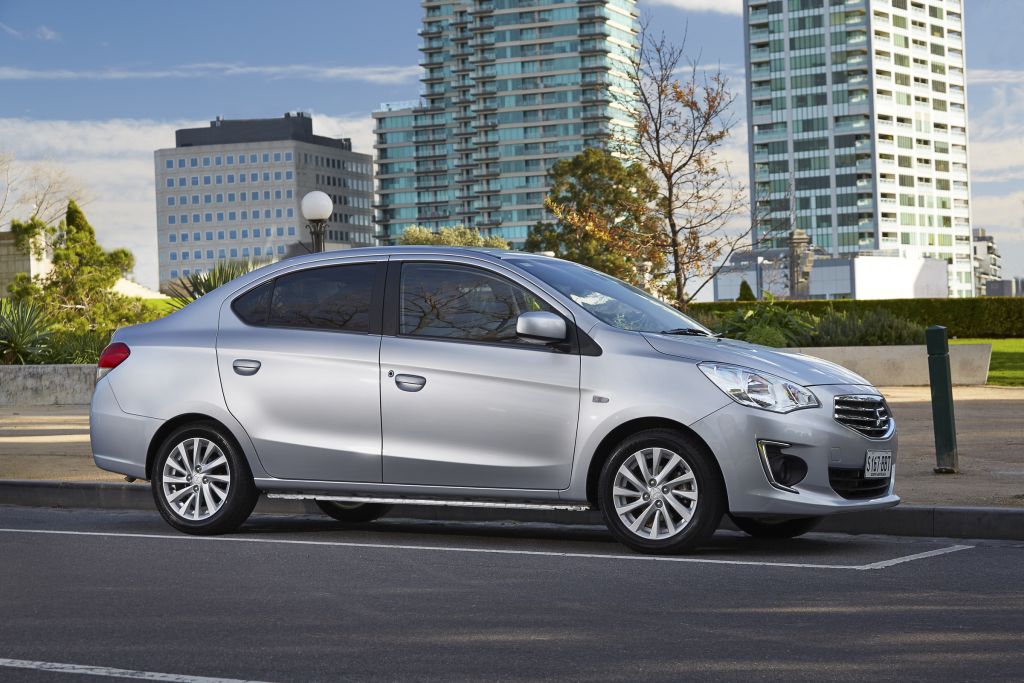
2. **Mitsubishi Mirage**The Mitsubishi Mirage, much like the Chevrolet Malibu, has officially been discontinued, with lingering examples likely only found on the forgotten corners of dealer lots. Its ultra-low prices might initially catch your eye, a final siren song from one of the last true budget warriors, cheaper than some people’s monthly coffee habit. And to its credit, the Mirage *is* impressively efficient, squeezing close to 40 MPG on the highway, making it a champion of frugality. It’s compact and nimble in traffic, ideal for darting through crowded city streets and squeezing into parking spaces others simply avoid.
But here’s the rub: while its affordability and efficiency are undeniable, driving the Mirage feels less like a choice and more like a chore, or perhaps even a form of penance. Its minuscule 1.2-liter three-cylinder engine musters just 78 horsepower, a number so small it’s almost endearing in its honesty. This means acceleration is not just slow; it’s an *event*, requiring careful planning and a deep breath for even the most mundane passing maneuvers. You’ll spend more time anticipating than actually performing, wondering if you’ll ever actually get up to speed before the next traffic light.
The interior is as simple as they come, a veritable temple to the concept of “no frills.” If you’re looking for refinement or any hint of modern comfort, the road, quite literally, leads elsewhere. While Apple CarPlay is available, the infotainment setup feels like a relic from a simpler digital age, a concession rather than a genuine feature. The materials are hard, the noise intrusion is significant, and the overall ambiance screams “economy” in the harshest possible tones. It’s a car that strips away every layer of driving pleasure, leaving only the bare mechanics of getting from point A to point B.
The Mirage is honest, efficient, and undeniably affordable, making it a viable option if your sole requirement is basic, reliable transportation and you genuinely despise spending money on cars. However, for anyone craving even a hint of fun, engagement, or modern amenity, it’s a complete non-starter. It lacks performance, refinement, and modern safety technology, even by budget car standards, making it feel like a throwback to when economy cars felt like punishment, not just practicality. It’s the kind of car that reminds you why you work harder for something better, rather than inspiring any loyalty or affection.
Car Model Information: 2024 Mitsubishi Mirage RALLIART
Name: Mitsubishi Mirage
Caption: Mitsubishi Mirage (sixth generation)
Manufacturer: Mitsubishi Motors
Production: 1978–2003,2012–present
Class: Subcompact car
Layout: Front-engine, front-wheel-drive
Predecessor: Mitsubishi Lancer (A70)
Successor: Mitsubishi Lancer#Eighth generation (2000)
Categories: 1980s cars, 1990s cars, 2000s cars, 2010s cars, 2020s cars
Summary: The Mitsubishi Mirage is a range of cars produced by the Japanese manufacturer Mitsubishi from 1978 until 2003 and again since. The hatchback models produced between 1978 and 2003 were classified as subcompact cars, while the sedan and station wagon models, marketed prominently as the Mitsubishi Lancer, were the compact offerings. The liftback introduced in 1988 complemented the sedan as an additional compact offering, and the coupé of 1991 fitted in with the subcompact range. The current Mirage model is a subcompact hatchback and sedan and it replaces the Mitsubishi Colt sold between 2002 and 2012.
Get more information about: Mitsubishi Mirage
Buying a high-performing used car >>>
Brand: Mitsubishi Model: Mirage
Price: $17,999 Mileage: 3,542 mi.
Read more about: Steering Clear of Danger: An In-Depth Look at 14 Vehicles with Concerning Safety Scores for Savvy Consumers
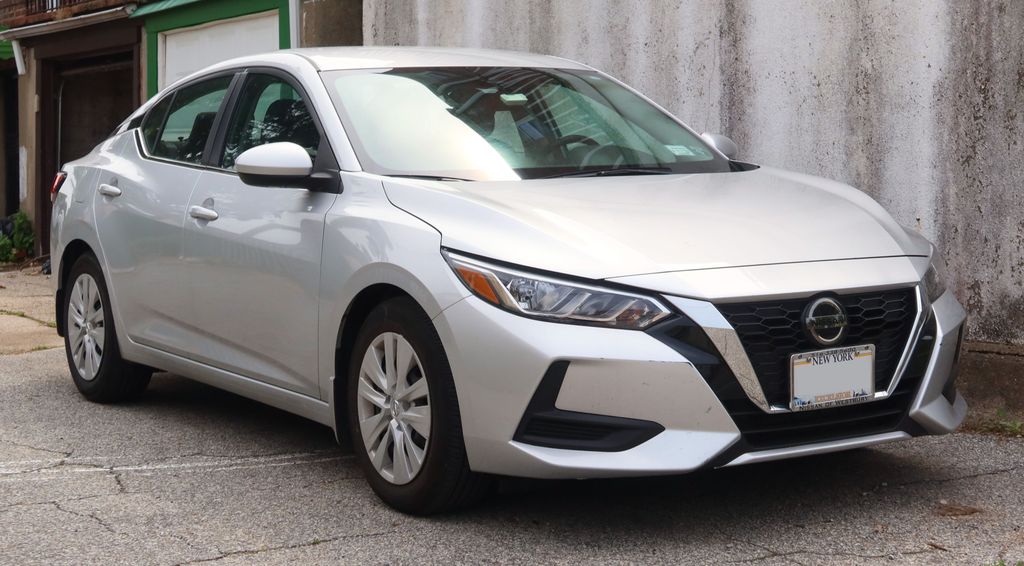
3. **Nissan Sentra**The Nissan Sentra has always played a precarious game, aiming to offer value with a touch of flair, much like a discount suit that looks good from a distance. The latest model certainly presents a clean aesthetic, boasting a clean dashboard design that’s easy on the eyes and surprisingly comfortable seats—a nice touch, because you’ll be spending a lot of time sitting in them. It’s an easy car to drive, uncomplicated and straightforward, and the trunk offers a decent amount of room, perfect for hauling groceries or, as the saying goes, the accumulated regrets of your life.
However, beneath this veneer of agreeable competence lies a rather bland driving experience. The 2.0-liter four-cylinder engine, with its 149 horsepower, feels sluggish off the line, struggling to muster any real enthusiasm. This lethargy is compounded by the Continuously Variable Transmission (CVT), which has a notorious tendency to drone under acceleration, sounding less like an engine working hard and more like a vacuum cleaner struggling with a shag carpet. It’s a powertrain that gets the job done, but with absolutely no sense of urgency or joy, making every merge and uphill climb a test of patience.
While the Sentra does come with a good suite of safety tech, some of it operates more like an overzealous co-pilot, constantly beeping and nudging you with a frequency that can become genuinely annoying. Interior finishes are a mixed bag, with soft touchpoints strategically placed in some areas where your hand might actually go, only to be contrasted sharply with cheap, hard plastics in others where your eye will definitely go. It’s a car that tries to impress but ultimately reveals its cost-cutting measures, leaving a distinct impression of compromise.
In essence, the Nissan Sentra is a fine car for the price, but it rarely, if ever, manages to stand out in its incredibly crowded class. You might not actively regret buying it, but it’s highly unlikely you’ll ever truly remember it either. Its powertrain lacks enthusiasm and offers precious little driving satisfaction; it feels like a placeholder, a generic car that exists to fill a slot rather than inspire. This general lack of refinement makes it feel less like a competitive compact sedan in 2025 and more like a rental car from a bygone era, doing the bare minimum without ever surprising you in a good way.
Car Model Information: 2024 Nissan Sentra S
Name: Nissan Sentra
Caption: 2021 Nissan Sentra SR (B18; Canada)
Manufacturer: Nissan
Aka: Nissan Sunny
Production: 1982–present
Class: Subcompact car
Predecessor: Nissan Sunny#B310
Categories: 1990s cars, 2000s cars, 2010s cars, 2020s cars, All Wikipedia articles written in American English
Summary: The Nissan Sentra is a series of automobiles manufactured by the Japanese automaker Nissan since 1982. Since 1999, the Sentra has been categorized as a compact car, while previously it occupied the subcompact class. Until 2006, Sentra was a rebadged export version of the Japanese Nissan Sunny, but since the 2013 model year, Sentra is a rebadged export version of the Sylphy. The Sentra nameplate is not used in Japan. Many other countries in Latin America sell their versions of the Sunny as the Sentra. In Mexico, the first three generations of the Sentra were known as the Nissan Tsuru (Japanese for crane), and the B13 model was sold under that name until 2017, alongside the updated models badged as Sentra.
In North America, the Sentra currently serves as Nissan’s compact car, despite being rated as a mid-size car by the EPA due to its interior volume since the 2007 model year. While previous Sentras were subcompacts, the Sentra has grown over the years, with the Nissan Versa having replaced the Sentra in the entry-level area.
The Sentra name was created for Nissan by Ira Bachrach of NameLab, and Bachrach describes the origin as “Nissan wanted consumers to understand that it was quite safe even though it was small. The word Sentra sounds like central as well as sentry, which evokes images of safety.”
Get more information about: Nissan Sentra
Buying a high-performing used car >>>
Brand: Nissan Model: Sentra
Price: $17,999 Mileage: 24,255 mi.
Read more about: Buyer Beware: 15 Sedans That Become Money Pits vs. Those That Hold Their Value After Five Years
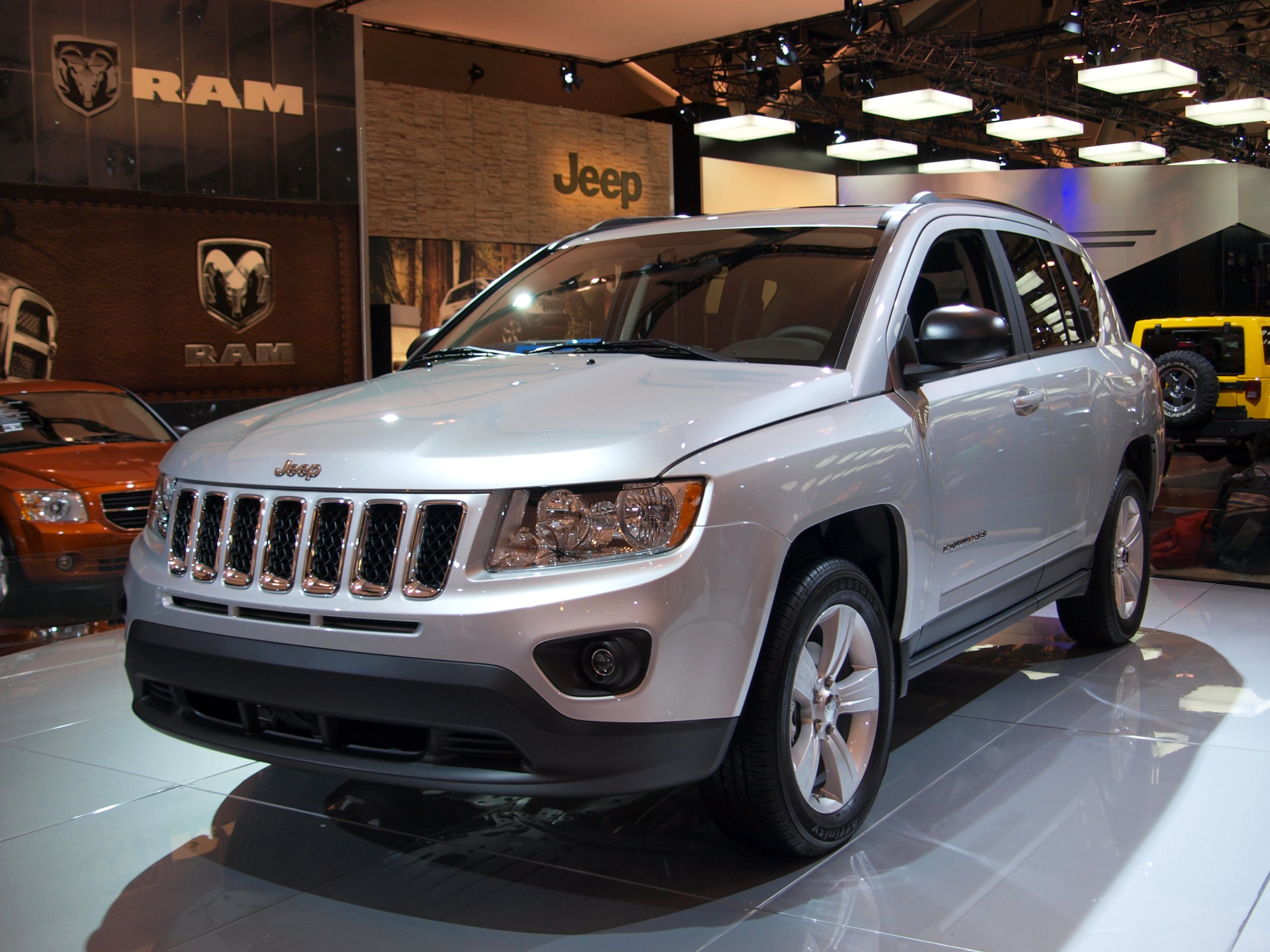
4. **Jeep Compass**The Jeep Compass, on first glance, exudes a rugged charm that promises adventure, making it look like a mini off-roader fresh from a daring expedition to the local mall. Its distinctive square design and confident stance certainly suggest it’s up for weekend adventures, even if those adventures usually involve nothing more strenuous than curb hopping. Inside, the infotainment system is often slick, with touch controls that respond quickly and intuitively, which can be a nice distraction from some of the car’s other, less appealing attributes.
But peel back that tough exterior, and the Compass often fails to live up to the adventurous image it so proudly projects. Performance can feel profoundly underwhelming, particularly on highways or inclines, where its 2.0-liter turbo-four, producing 200 horsepower, and 8-speed automatic transmission feel more “meh” than “mountain climber.” The powertrain struggles to provide adequate grunt, leaving drivers wanting more when trying to accelerate or maintain speed. Adding insult to injury, its fuel economy often lags behind many compact SUV competitors, making it surprisingly thirsty for a vehicle of its size and perceived capability.
The disconnect between expectation and reality continues inside the cabin. While the design is agreeable enough, the interior materials don’t quite reflect the sticker price, leaving a distinct impression that Jeep attempted to go upscale but ran out of budget halfway through. Hard plastics and inconsistent finishes detract from any sense of premium quality. Furthermore, space in the back feels tighter than a pair of skinny jeans on Thanksgiving, making longer journeys a potential misery for rear passengers. This cramped feeling is particularly disappointing for a vehicle that wears the iconic Jeep badge, which usually implies a certain level of practical utility.
Ultimately, while the Compass wears its iconic Jeep badge proudly, it doesn’t always deliver on the brand’s adventurous promise or the quality expected from its price point. It’s a car that looks far more capable and refined than it actually behaves, leading to a significant sense of disillusionment for owners. Persistent reliability scores and owner satisfaction figures remain stubbornly low, meaning you might spend more time at the dealership than actually enjoying the hypothetical dirt trail. It combines premium pricing with underwhelming execution in key areas, making it a questionable choice for anyone who actually wants a truly good SUV.
Car Model Information: 2024 Jeep Compass Latitude
Name: Jeep Compass
Caption: 2019 Jeep Compass
Manufacturer: Jeep
Production: 2006–present
ModelYears: 2007–present
Class: Compact crossover SUV
BodyStyle: SUV
Layout: Front-engine, front-wheel-drive layout
Chassis: Unibody
Categories: 2010s cars, 2020s cars, All-wheel-drive vehicles, All Wikipedia articles written in American English, Articles with short description
Summary: The Jeep Compass is a compact crossover SUV, introduced in 2006 for the 2007 model year. The first generation Compass and Patriot, its rebadged variant, were among Jeep’s first crossover SUVs. The second-generation Compass debuted in September 2016 in Brazil and at the Los Angeles International Auto Show in November 2016, sharing a modified platform with the Renegade. It is positioned between the smaller Renegade and the larger Cherokee globally or the Commander in South America. The third-generation Compass debuted in May 2025, built on the STLA Medium by Stellantis, shared with other PSA Groupe vehicles.
Get more information about: Jeep Compass
Buying a high-performing used car >>>
Brand: Jeep Model: Compass
Price: $19,174 Mileage: 53,969 mi.
Read more about: Buyer’s Remorse Hits Hard: 15 Cars Drivers Regretted Purchasing According to Latest Survey Findings
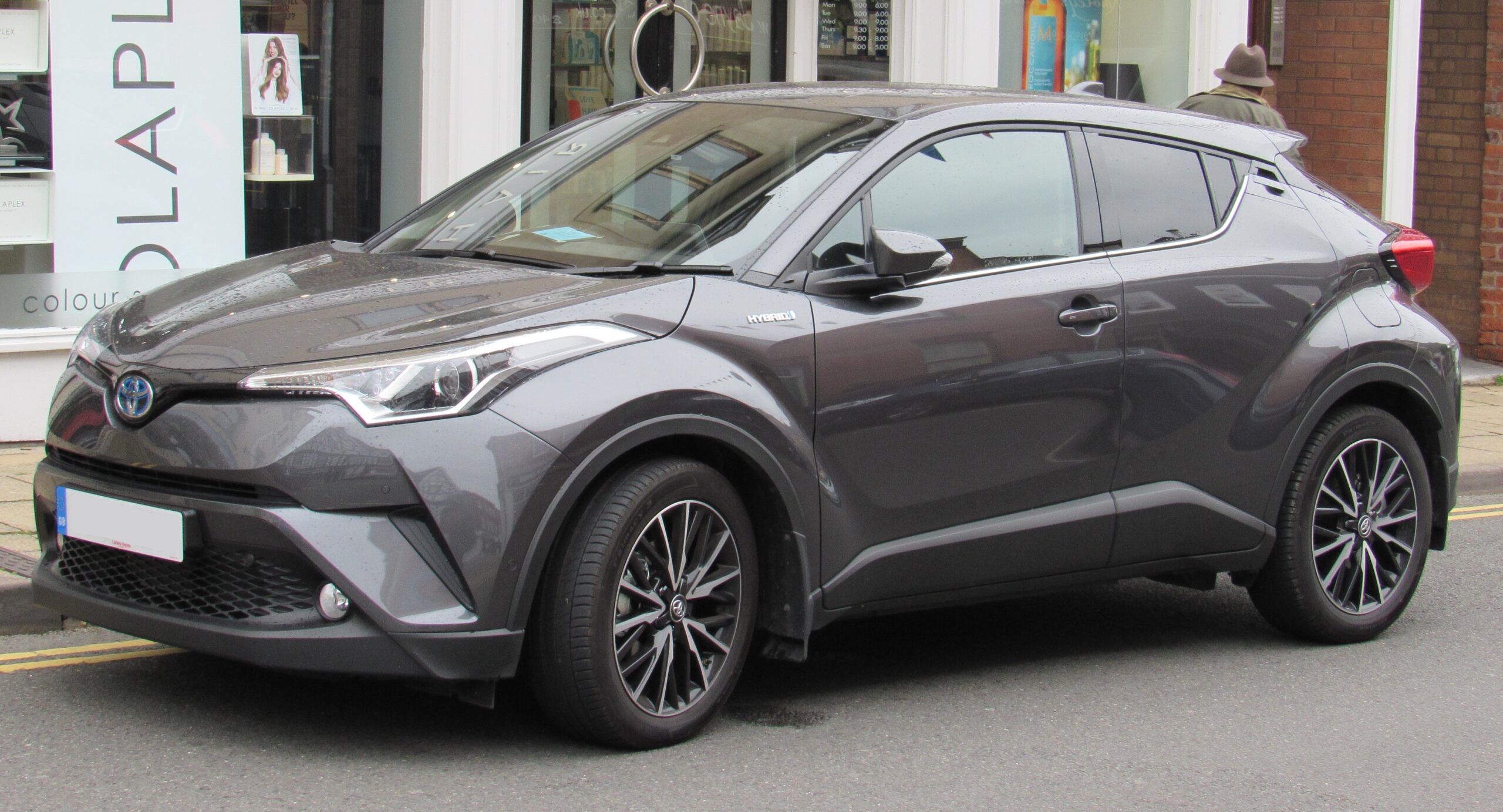
5. **Toyota C-HR**The Toyota C-HR, or Coupe High-Rider, certainly knows how to make an entrance. Its standout looks appeal directly to design-forward drivers, particularly if your definition of “design-forward” embraces sharp angles, dramatic creases, and a roofline that makes back seat passengers feel like they’re journeying into a dimly lit cave. It corners with decent agility, a surprising nimbleness in city traffic, and the ride is suitably firm for urban terrain, meaning you’ll feel every single pothole, providing a direct, albeit sometimes jarring, connection to the road. The cabin, with its youthful, asymmetrical layout, is undeniably different in a fun, quirky way, provided you don’t actually need to see out the back.
However, it’s that very design-forward philosophy that often becomes the C-HR’s undoing in terms of practicality. Rear visibility suffers tremendously due to its quirky, aggressively sloped roofline and chunky C-pillars; changing lanes becomes less of a glance and more of a guessing game, demanding an almost telepathic connection with surrounding traffic. Rear-seat space feels severely constrained, making it suitable only for very small children or, perhaps, enemies you wish to punish during a short trip. It’s a triumph of form over function, where the artistic vision clearly took precedence over basic usability.
Under the hood, the 2.0-liter four-cylinder powertrain leaves drivers perpetually waiting for a meaningful response, especially when attempting to merge onto a highway or pass slower vehicles. This isn’t a car for the impatient; you’ll be checking your watch, wondering if the engine has received your request for acceleration. Furthermore, the complete absence of an all-wheel-drive option significantly limits its appeal in colder regions or for those who truly expect their “crossover” to handle more than just pristine pavement. It makes the C-HR less of a versatile crossover and more of a front-wheel-drive hatchback that simply *looks* like an SUV.
Adding to its practical woes, cargo space is tighter than those impossibly narrow pathways that crazy cave divers keep squeezing into in those terrifying videos you keep getting on TikTok. It’s a stylish companion, yes, but not the most practical one for the daily demands of life, groceries, or even a modest amount of luggage. The C-HR’s aggressive pursuit of unique aesthetics comes at a steep cost to fundamental utility. The lack of power and all-wheel drive, coupled with a form-over-function design, severely hurts its overall usability, proving that sometimes, looking cool simply isn’t worth the hassle, especially when you need a car to do more than just make a visual statement.
Car Model Information: 2018 Toyota C-HR XLE Premium
Name: Toyota C-HR
Caption: Toyota C-HR 1.8 Hybrid (ZYX20, Europe)
Manufacturer: Toyota
Aka: FAW Toyota
Production: 2016–present
Class: Subcompact crossover SUV
BodyStyle: SUV
Platform: Toyota TNGA-C platform
Layout: unbulleted list
Categories: 2020s cars, ASEAN NCAP small off-road, All-wheel-drive vehicles, All Wikipedia articles written in British English, All articles with dead external links
Summary: The Toyota C-HR is a subcompact crossover SUV manufactured and marketed by Japanese automaker Toyota since 2016. Since 2020, it is positioned between the Yaris Cross and Corolla Cross in Toyota’s crossover SUV range. The first-generation C-HR was available in many regions, including Japan, China, North America, Europe, Southeast Asia, and Australasia, and was produced in four countries. Since the release of the second-generation C-HR in 2023, availability of the C-HR has been limited to Europe and Australia, with production centralised in Turkey. The Corolla Cross, released in 2020, has largely taken over the model’s positioning outside Europe.
Get more information about: Toyota C-HR
Buying a high-performing used car >>>
Brand: Toyota Model: C-HR
Price: $15,990 Mileage: 69,840 mi.
Read more about: Buyer Beware: 10 Crossovers and SUVs — Identifying Those Prone to Transmission Trouble Before 90,000 Miles and Their Reliable Rivals

6. **Chevrolet Trax (Base Trim)**The redesigned Chevrolet Trax has certainly shed its former skin, finally escaping its previous “angry roller skate” aesthetic with a fresh new look that actually catches the eye. With its longer, lower stance and sharper styling, it now genuinely looks decent for a compact SUV, a significant improvement that gives it a much-needed boost in curb appeal. The interior layout is clean and modern, featuring user-friendly controls and a good infotainment display, creating an initial impression of solid value and contemporary design. Drivers will also appreciate the light steering and the compact size, which make city driving feel remarkably manageable, almost like guiding a shopping cart through a crowded supermarket. Rear legroom, surprisingly, is quite generous, providing passengers with a bit more breathing room than one might expect from a vehicle in this class.
However, the initial visual appeal and spacious rear quarters quickly run headfirst into a significant roadblock when it comes to the driving experience, especially in its base trim. The heart of the problem lies with the base engine: a 1.2-liter turbocharged three-cylinder that produces a modest 137 horsepower and 162 lb-ft of torque. While these numbers might sound acceptable on paper for a small crossover, the reality on the road is a different story. This powertrain results in agonizingly slow acceleration, particularly noticeable in daily traffic and, more critically, when attempting highway merges. You’ll find yourself praying for a downhill slope just to get up to speed, feeling perpetually underpowered and overwhelmed by faster-moving vehicles.
Beyond the anemic acceleration, the experience of the lower trims is further hampered by a distinct feeling of cheapness. While the interior design is modern, the materials used are predominantly hard plastics, a stark contrast to the more refined touches found in higher trims or many rivals. Essential features that many competitors now offer as standard are conspicuously missing from these entry-level models, making the initial ownership experience feel decidedly undercooked and unmistakably like you got the “budget” version. It’s a car that gives a good first impression visually but quickly reveals its compromises once you start to live with it, creating a palpable sense of having settled for less.
So, while the Trax certainly looks good, marking a commendable aesthetic leap for Chevrolet, its base performance is a real buzzkill, transforming what could have been a truly competitive offering into something frustratingly underwhelming. The promise of a stylish, modern compact SUV is undermined by a powertrain that simply cannot keep up with the demands of modern driving, and an interior that reminds you of the corners cut to hit that attractive price point. It’s a classic case of outer beauty masking inner mediocrity, ultimately breaking the hearts of owners who expected more from its appealing facade.
Car Model Information: 2024 Chevrolet Trax FWD 1RS
Name: Chevrolet Trax
Manufacturer: General Motors
Aka: unbulleted list
Production: 2013–present
BodyStyle: SUV
Predecessor: unbulleted list
Successor: unbulleted list
Categories: 2010s cars, 2020s cars, All-wheel-drive vehicles, All Wikipedia articles written in American English, Articles with short description
Summary: The Chevrolet Trax is a compact crossover SUV manufactured by General Motors and marketed under the Chevrolet brand since 2013, currently in its second generation.
The first generation model was released globally in 2013 as the smallest, entry-level crossover SUV offering from the brand. Development and production were centered in South Korea by GM Korea. A restyled model was also produced as the Buick Encore in North America and as the Opel/Vauxhall Mokka in Europe.
In several markets, the vehicle was marketed as the Chevrolet Tracker, and as the Holden Trax in Australia and New Zealand. The Trax became available in Canada, Mexico, Germany, South Korea, Lebanon, United Arab Emirates, and Europe for the 2013 model year and was released in the United States for the 2015 model year.
In 2019, GM released the replacement of the Trax for China and Latin America, the Tracker. The first-generation Trax continued to be marketed in North America, South Korea, and several other markets until 2022, when it was replaced by the larger second-generation Trax due for the 2024 model year. The second-generation Trax is also marketed in China as the Chevrolet Seeker.
Get more information about: Chevrolet Trax
Buying a high-performing used car >>>
Brand: Chevrolet Model: Trax
Price: $20,528 Mileage: 40,929 mi.
Read more about: Barn Find Billions: Unearthing 11 Ultra-Rare ’60s Chevy Models That Could Make You Rich
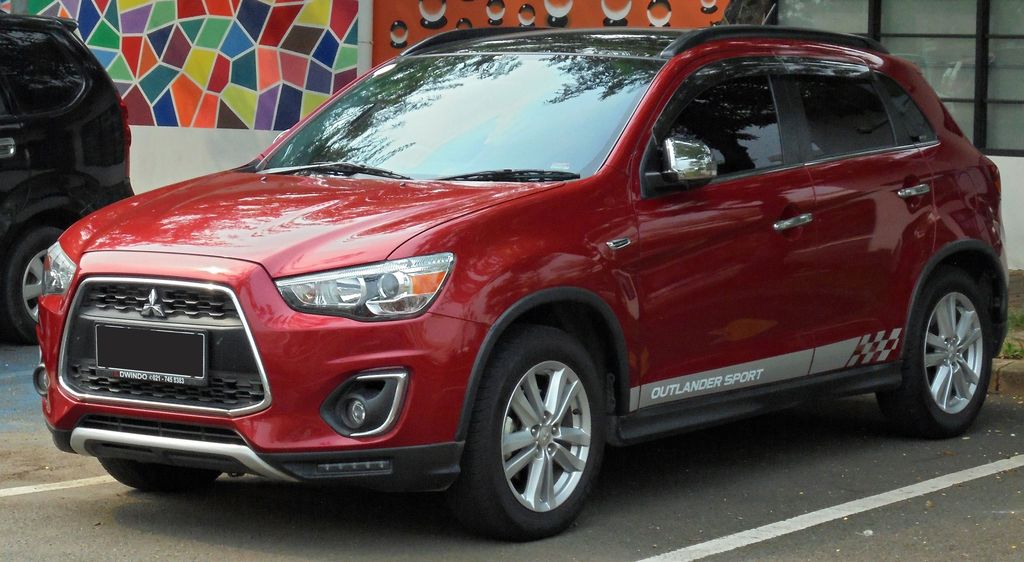
7. **Mitsubishi Outlander Sport**The 2025 Mitsubishi Outlander Sport, bless its heart, tries its best to remain relevant in a brutally competitive segment. It sticks to its compact proportions, which, to its credit, do help drivers feel in control during tight city maneuvers – you can literally thread it through traffic like a needle, given its size. Its rugged styling, inherited from an era when “rugged” meant something different, still gives it a certain presence, and the available all-wheel drive is a small comfort, offering year-round confidence. You’ll even find smartphone connectivity in the infotainment system and steering that’s light enough for low-effort parking, making it seem like a decent urban warrior on paper.
Yet, for all its attempts to put on a brave face, the Outlander Sport is a stark reminder that time marches on, and sometimes, it leaves vehicles behind. The fundamental platform design is practically ancient, tracing its roots back over a decade to what was essentially a 2011 model. This geological-era undergirding severely limits any semblance of modern comfort, contemporary performance, or the kind of refinement that buyers have come to expect from new crossovers. Driving it feels less like piloting a 2025 vehicle and more like a trip in a well-maintained museum piece.
Step inside, and the time warp continues. The cabin materials feel dated, the engine options – either a 148 hp 2.0L or a 168 hp 2.4L – struggle to provide anything more than adequate motivation, and the overall driving experience feels utterly frozen in time. While the front seating does offer fair support for short trips and the high ride height provides that traditional SUV feel, making you feel bigger than you are, it’s not enough to overcome the pervasive sense of antiquity. Even the inclusion of modern safety features like lane departure warning and forward collision mitigation on some trims feels like lipstick on a very old pig.
Mitsubishi’s generous 10-year/100,000-mile powertrain warranty is certainly appealing, mostly because, let’s be honest, you’re likely to need it with a vehicle built on such an aged foundation. This car highlights a fundamental flaw: in a world where newer crossovers have rocketed forward in every measurable aspect, the Outlander Sport offers little more than a persistent shrug. It’s like buying a brand new flip phone in 2025 – sure, it works, but you have to seriously wonder *why* anyone would choose it over literally any other option.
The primary reason the Mitsubishi Outlander Sport breaks owners’ hearts is simple: it’s dated to its core. “The platform design dates back over a decade (it’s essentially a 2011 model underneath), which severely limits comfort, performance, and refinement compared to newer models. The cabin materials, engine options (either a 148 hp 2.0L or 168 hp 2.4L), and overall driving experience feel frozen in time, despite newer crossovers having rocketed forward. It’s like buying a brand new flip phone in 2025 — it works, but why?” This isn’t just a critique; it’s a profound statement on why some cars, despite a rugged appearance and an AWD option, simply can’t escape their past.
Car Model Information: 2023 Mazda Mazda3 FWD w/Select Package
Categories: All set index articles, Articles with short description, Cars introduced in 2010, Mitsubishi Motors vehicles, Set index articles on cars
Summary: The Mitsubishi Outlander Sport is an automobile nameplate used by the Japanese automobile manufacturer Mitsubishi Motors since 2010 for several subcompact crossover SUV models:
Mitsubishi ASX, marketed as the Outlander Sport in the United States, Argentina, Brazil, and Indonesia since 2010
Mitsubishi Xforce, marketed as the Outlander Sport in the Americas and Africa since 2023
Get more information about: Mitsubishi Outlander Sport
Buying a high-performing used car >>>
Brand: Mitsubishi Model: Outlander Sport
Price: $17,197 Mileage: 57,859 mi.
Read more about: The Assembly Line Anomaly: 15 Insanely Quirky Car Designs That Defied Convention and Made It To Production
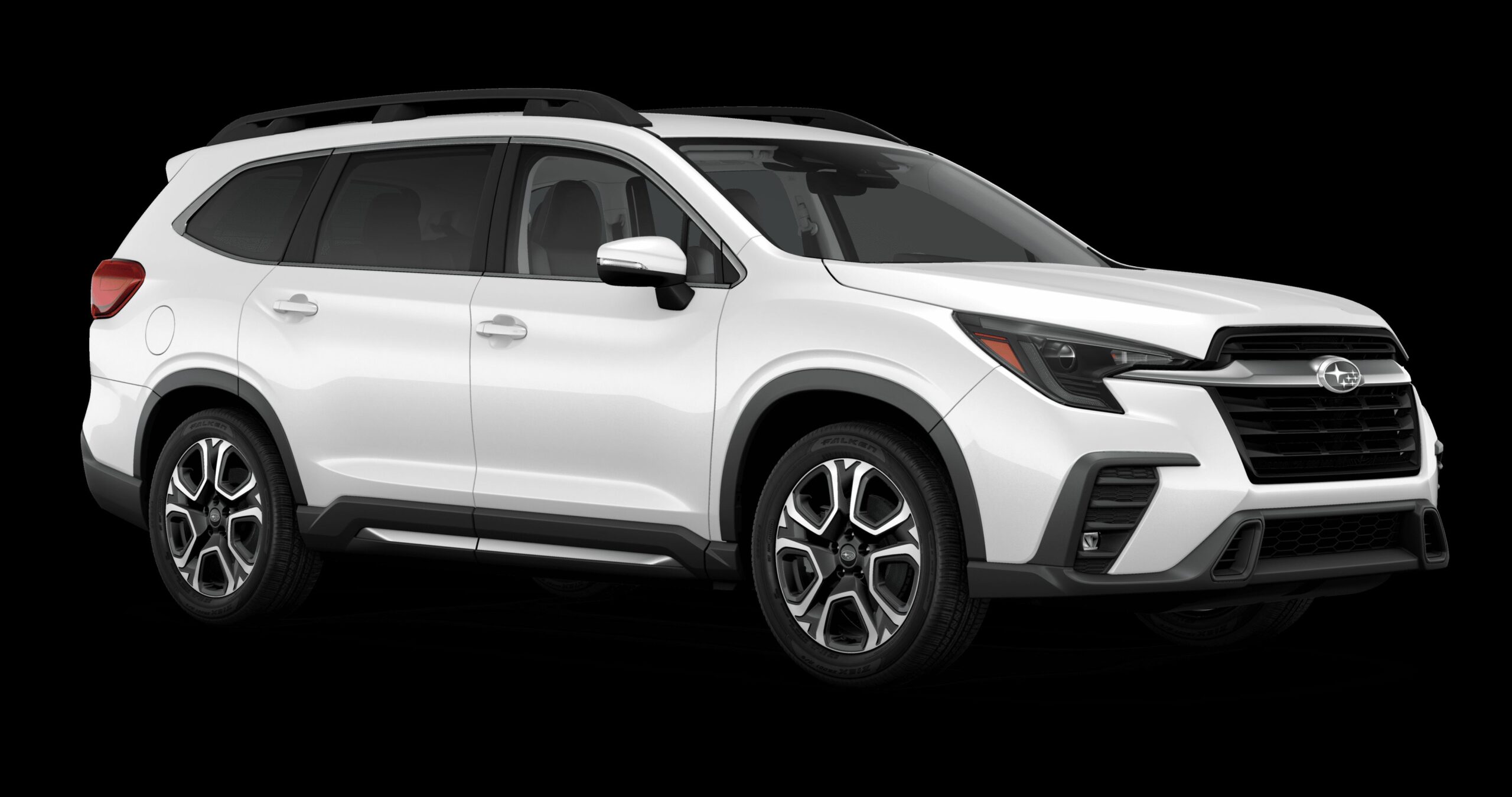
8. **Subaru Ascent**For families navigating the unpredictable whims of Mother Nature, the Subaru Ascent holds a certain appeal, primarily due to its standard all-wheel drive. That’s a huge bonus, especially for those in snow-prone states, making it a seemingly reliable choice for getting the kids to school in a full-blown blizzard. The cabin, upon first inspection, is genuinely spacious, and the infotainment setup boasts multiple USB ports and decent screen clarity, perfect for keeping the little ones entertained on longer hauls. Seats are comfortable, and visibility is solid for an SUV of its size, so spotting that runaway soccer ball isn’t a mission impossible.
However, the promise of unflappable Subaru capability often gets lost in translation once you ask the Ascent to actually, you know, *ascend*. The 2.4-liter turbocharged flat-four engine, churning out 260 hp, can feel noticeably strained under a full load, particularly when you’re attempting to tow or merge onto a busy highway with a full complement of kids, their gear, and a week’s worth of snacks. The Continuously Variable Transmission (CVT) occasionally rears its ugly head, producing that infamous rubber-band-like acceleration that makes the engine sound like it’s trying really, *really* hard but not actually getting anywhere fast. It’s a performance lacking the characteristic Subaru verve.
While the interior offers commendable space, it conspicuously lacks the upscale polish and attention to detail that many buyers expect from a modern three-row SUV. It feels more “durable” than “luxurious,” a beige minivan with a lift kit trying to masquerade as something more. Third-row access is merely average, and the cargo capacity behind that third row is frankly limited, meaning you’ll either need to pack exceptionally light or, in a moment of pure parental desperation, leave a kid at home. It’s a practical family hauler, no doubt, but it never quite manages to sparkle or inspire.
The real sting for Ascent owners, however, often comes after the initial honeymoon phase. “The Ascent has faced a range of persistent reliability issues, particularly related to its transmission and other components, making long-term ownership a bit of a gamble.” This is a critical blow for a vehicle designed to be the bedrock of family transportation. What good is standard AWD and ample space if you’re constantly wondering if the car will let you down? It certainly tarnishes the otherwise solid reputation Subaru has built over decades for dependability.
Despite its substantial size and relatively high price point, the Subaru Ascent simply doesn’t deliver the performance or the polished refinement expected from a modern three-row SUV. It often feels a step behind the competition, leaving owners with a sense of ‘what if’ and ‘why couldn’t it be better?’ It’s a car that promised to be the ultimate family adventurer but often turns out to be a slightly under-achieving workhorse, creating a noticeable disconnect between its capable image and its real-world execution.
Car Model Information: 2021 Subaru Ascent Premium 7-Passenger
Name: Subaru Ascent
Manufacturer: Subaru
Aka: Subaru Evoltis
Production: 2018–present
ModelYears: 2019–present (North America)
Assembly: Lafayette, Indiana
Class: Mid-size crossover SUV
BodyStyle: SUV
Layout: Front-engine, four-wheel-drive layout
Platform: Subaru Global Platform
Related: Subaru Legacy (seventh generation),Subaru Outback
Engine: Subaru FA engine#FA24F,Turbocharger,Flat-four engine
Powerout: 260 hp
Abbr: on
Transmission: Lineartronic,Continuously variable transmission
Wheelbase: 113.8 in
Length: 196.8 in
Width: 76.0 in
Height: 71.6 in
Weight: convert
Predecessor: Subaru Tribeca
ModelCode: WM
Categories: 2020s cars, All-wheel-drive vehicles, All Wikipedia articles written in American English, All articles with a promotional tone, Articles with a promotional tone from December 2017
Summary: The Subaru Ascent is a mid-size crossover SUV produced by Subaru. In some markets, it is sold as the Subaru Evoltis. It is the largest automobile Subaru manufactures. The seven or eight-seat passenger SUV, with the design based on the VIZIV-7 concept, made its debut at the LA Auto Show on November 28, 2017 and became available in the third quarter of 2018. It has an American-built predecessor, the Tribeca. The Ascent is not available in Japan.
Get more information about: Subaru Ascent
Buying a high-performing used car >>>
Brand: Subaru Model: Ascent
Price: $23,804 Mileage: 79,540 mi.
Read more about: Unleash Your Inner Engineer: Top 14 Crate-Build Cars You Can Assemble Today
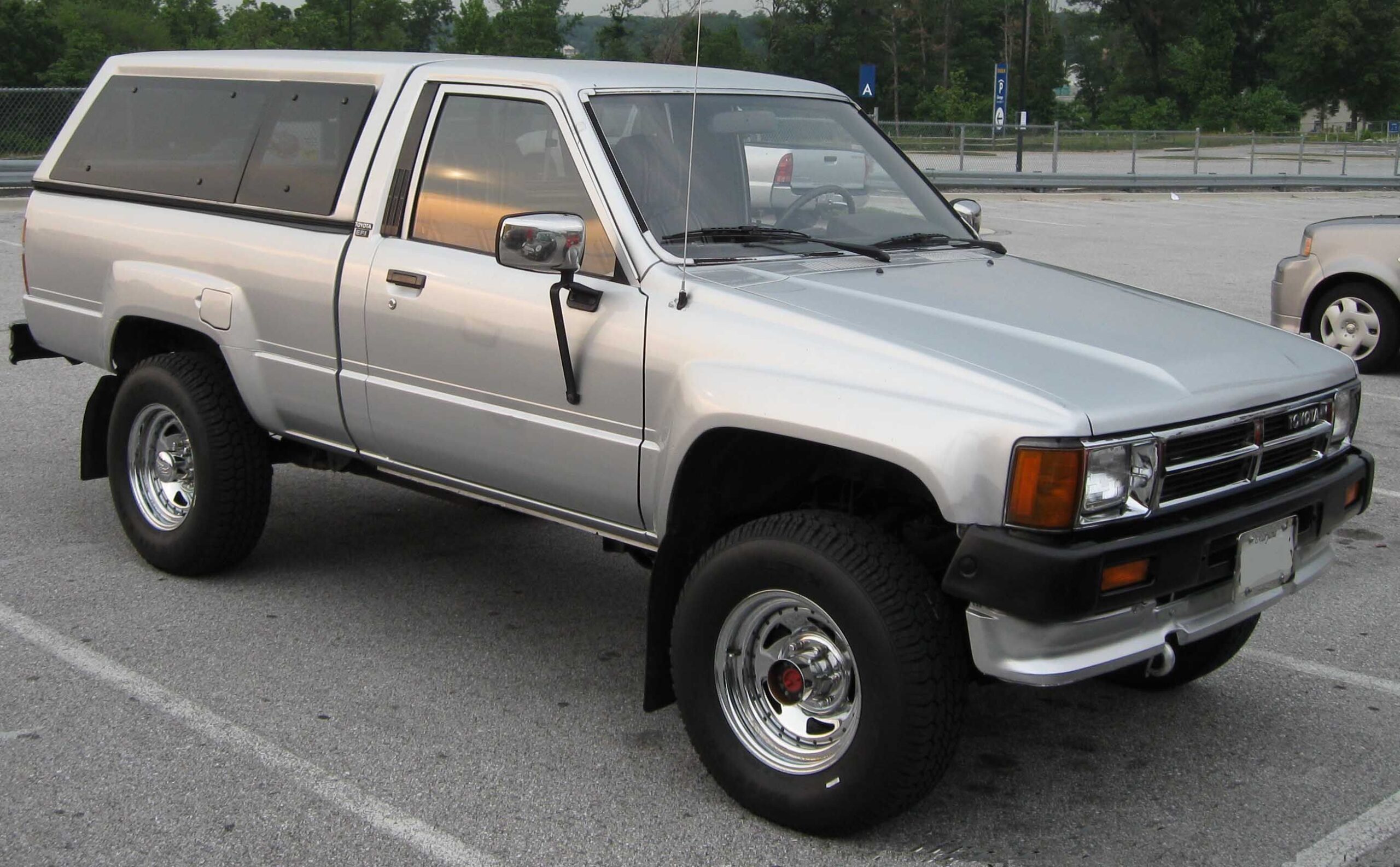
9. **Toyota bZ4X**The Toyota bZ4X (yes, that name truly rolls right off the tongue, doesn’t it?) represents Toyota’s decidedly hesitant, almost tiptoeing step into the brave new world of all-electric vehicles. Its exterior design, to its credit, definitely turns heads, sometimes in genuine admiration, sometimes in utter confusion, but heads turn nonetheless. It offers a smooth ride that feels decidedly serene, and the interior is a quirky, futuristic space that somehow feels like a spaceship designed by someone who really, really loves fabric. The touchscreen is impressively large and clear, and the digital gauge cluster, placed so far forward it’s practically in the windshield, is easy to read.
However, for a vehicle stepping into one of the most dynamic and rapidly evolving segments, the bZ4X quickly reveals a significant Achilles’ heel: its charging speed. It lags noticeably behind many of its rivals, making those eagerly anticipated long road trips feel even longer as you wait at charging stations. And then there’s the range itself, which, topping out at around 250 miles maximum, is far from class-leading. This makes it a genuinely questionable choice for anyone who suffers from even a mild case of range anxiety, forcing owners to meticulously plan every journey.
The driving experience itself, despite the smooth ride, feels disappointingly dulled when compared to the more dynamic and engaging EVs flooding the market. It’s like ordering a double espresso and getting a decaf coffee instead; it gets the job done, but where’s the jolt, the excitement? While rear-seat space is surprisingly good, a silver lining in an otherwise cloudy practical assessment, the cargo space feels notably limited due to that aggressively sloped roofline, clearly prioritizing “looks” over “luggage.” You might love the aesthetic, but your groceries or weekend getaway gear might disagree.
Build quality is generally good, as one would expect from a Toyota, but some of the interior materials don’t quite feel as futuristic or premium as the overall design suggests. It’s a bold step, undeniably, a statement that Toyota *can* build an EV, but it’s more of a cautious, measured stride than a long, confident leap forward. It struggles to stand out in a segment where every competitor is trying to redefine what an electric vehicle can be, leaving owners with an EV that’s just…fine.
The core issue that causes the Toyota bZ4X to break hearts is its fundamental inability to deliver where it counts in the EV realm. “Its underwhelming range and painfully slow charging limit its appeal in an increasingly competitive EV market where rivals offer more for less. As Toyota’s electric flagship, it doesn’t lead where it should, feeling more like a test run than a finished product.” This isn’t just a missed opportunity; it’s a profound disappointment for those who believed Toyota would enter the EV space with the same disruptive innovation they brought to hybrids. Instead, they delivered an electric car that simply can’t keep up with the electrifying pace of the competition.
Car Model Information: 2023 Toyota bZ4X Limited
Name: Toyota bZ4X
Caption: 2023 Toyota bZ4X AWD Limited (US)
Manufacturer: Toyota
ModelCode: EA10
Aka: unbulleted list
Production: April 2022 – present
ModelYears: 2023–present (North America)
Assembly: unbulleted list
Designer: Yung Joo Presciutti, Ken Billes, Shinya Minagawa, Yuki Takamatsu, and Hiroyuki Tada
Class: Compact crossover SUV
BodyStyle: SUV
Layout: unbulleted list
Platform: e-TNGA
Related: unbulleted list
Motor: unbulleted list
Powerout: unbulleted list
Abbr: on
Transmission: BluE Nexus
Battery: unbulleted list
Range: unbulleted list
Charging: unbulleted list
Wheelbase: 2850 mm
Length: 4690 mm
Width: 1860 mm
Height: 1650 mm
Weight: convert
Predecessor: Toyota RAV4 EV
Sp: us
Categories: All-wheel-drive vehicles, All Wikipedia articles written in American English, All articles containing potentially dated statements, All articles with unsourced statements, Articles containing Japanese-language text
Summary: The Toyota bZ4X, marketed as simply the Toyota bZ in North America since 2025, is a battery electric compact crossover SUV manufactured by Toyota. A Subaru version is marketed as the Subaru Solterra.
The vehicle debuted in April 2021 as the “bZ4X Concept”. It is the first vehicle to be based on the e-TNGA platform co-developed by Toyota and Subaru, and the brand’s first model to be part of their Toyota bZ (“beyond Zero”) series of zero-emissions vehicles.
Worldwide sales of the bZ4X started out in mid-2022, with production planned in Japan and China. Sales in the United States also started in 2022. When first introduced, Toyota said it would be the first of seven “bZ” models to be launched globally by 2025; however, the company fell far short of that goal and began to move away from the bZ naming convention in 2025.
The model received a major refresh in 2025, initially for Europe and North America, with design updates and major mechanical improvements such as more efficient motors, improved cooling, and higher power output. For North America, the model was renamed to Toyota bZ. An extended length, station wagon-like version was also introduced as the bZ Woodland in North America, and as the bZ4X Touring in Europe. A Subaru version of the extended length version is marketed as the Subaru Trailseeker (Japanese: スバル・トレイルシーカー, Hepburn: Subaru Toreirushīkā).
Get more information about: Toyota bZ4X
Buying a high-performing used car >>>
Brand: Toyota Model: bZ4X
Price: $24,199 Mileage: 42,297 mi.
Read more about: Unveiling the Most Dependable Rides: 14 Top SUV Models You Can Trust, According to Consumer Reports

10. **Mazda CX-3**Ah, the Mazda CX-3. It’s a car that genuinely *wants* to be driven, a spirited little machine that delivers a driving experience far beyond what its compact SUV designation might suggest. With responsive steering and sharp handling, it truly drives like a sporty hatchback, making city maneuvers genuinely enjoyable, darting through traffic with an unexpected verve. It looks elegant, especially in that signature “Soul Red Crystal Metallic” paint, and upholds Mazda’s well-earned reputation for clean, driver-focused interiors. The infotainment dial is intuitive, and the materials generally feel high quality, lending an air of premium sophistication that belies its price point.
But here’s the rub, and it’s a big one: the CX-3 is simply too small for many modern drivers’ needs. The space inside is incredibly tight, particularly in the back seat, which is best reserved for small children, very patient adults on short trips, or perhaps your gym bag. Cargo room is also severely limited, so any grand plans for an IKEA run or a substantial grocery haul will need to be re-evaluated. Taller drivers often report feeling uncomfortably boxed in, as if they’re driving a custom-fit glove that’s just a size too small, making longer journeys a chore rather than a pleasure.
While its sporty handling is a definite plus on smooth asphalt, the ride can feel noticeably stiff over rougher pavement, ensuring you’ll feel every single pebble, expansion joint, and road imperfection with visceral clarity. This direct, almost jarring, connection to the road can quickly wear thin in daily commuting. Furthermore, a few modern safety features that many competitors now offer as standard are conspicuously missing from the base trims, which, for a car positioned as a stylish city companion, is a bummer that detracts from its overall value proposition.
It’s a classic case of Mazda creating a driver’s car that isn’t always a passenger’s favorite, and certainly not the most practical subcompact SUV out there. It’s like a beautifully crafted sports jacket that’s just a little too snug for comfort and lacks enough pockets for your essentials. While the aesthetic and driving dynamics are undeniably appealing, they come at the expense of fundamental utility and comfort that many buyers prioritize in this segment. It truly is a car that asks you to choose between driving pleasure and everyday practicality.
The Mazda CX-3 ultimately breaks hearts because it struggles to justify its existence in today’s landscape. “The CX-3 is simply too small and too dated to compete in today’s crowded subcompact SUV segment. Mazda’s newer offerings (like the CX-30) have outclassed it in nearly every way, making it an awkward choice that’s been left behind by progress.” It’s a poignant reminder that even a well-engineered, engaging car can become obsolete when its fundamental design is out of sync with market demands and newer, better stablemates arrive to steal its thunder. It looks fantastic and drives engagingly, but it’s a relic in a fast-forward world.
Car Model Information: 2020 Mazda CX-3 Sport
Name: Mazda CX-3
Manufacturer: Mazda
ModelCode: DK
Production: 2014–present
ModelYears: 2016–present,2016–2021 (United States/Europe),2016–2022 (Canada)
Assembly: Hiroshima,Salamanca, Guanajuato,Rayong
Designer: Yōichi Matsuda
Class: Subcompact crossover SUV
BodyStyle: SUV
Layout: Front-engine, front-wheel-drive layout,Front-engine, four-wheel-drive layout
Platform: [object Object]
Related: Mazda2#DJ
Engine: ubl
Transmission: Skyactiv#Skyactiv-MT,Skyactiv#Skyactiv-Drive
Wheelbase: 2570 mm
Abbr: on
Length: 4275 mm
Width: 1765 mm
Height: 1535 mm
Weight: convert
Successor: Mazda CX-30
Categories: 2020s cars, All-wheel-drive vehicles, All articles lacking reliable references, All articles with unsourced statements, Articles lacking reliable references from April 2024
Summary: The Mazda CX-3 is a subcompact crossover SUV (B-segment) manufactured by Mazda. Based on the same platform as the third-generation Mazda2, it was revealed on 19 November 2014 ahead of the 2014 Los Angeles Auto Show as a production vehicle for the 2016 model year.
Since mid-2022, the production in Japan was shifted to Mexico and Thailand. Since then, sales of the CX-3 in the Japanese market are served by imported units from Thailand.
Get more information about: Mazda CX-3
Buying a high-performing used car >>>
Brand: Mazda Model: CX-3
Price: $18,590 Mileage: 37,854 mi.
Read more about: Unmasking the Speed Demons: A Deep Dive into the 13 Car Models Most Often Ticketed in the U.S.
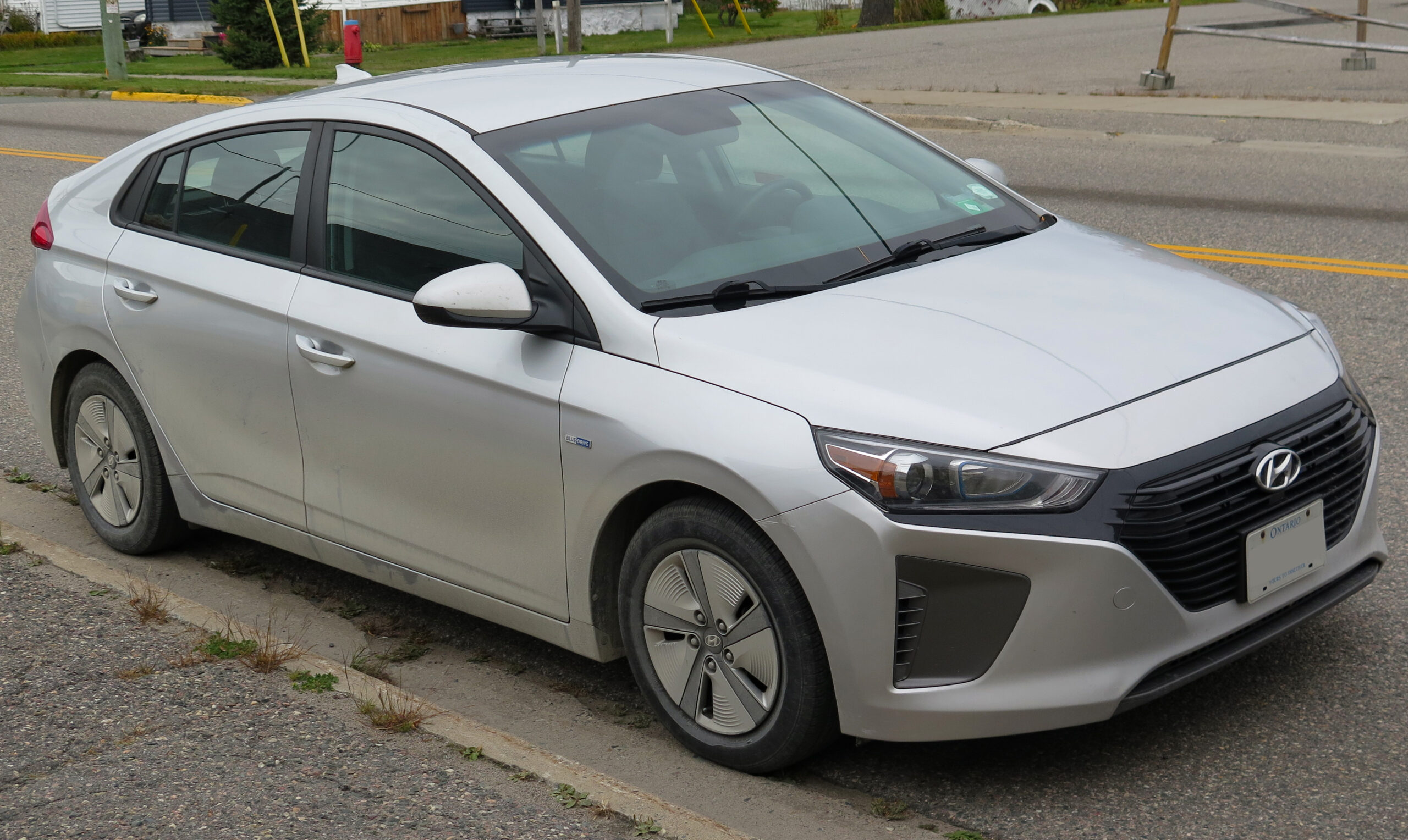
11. **Hyundai Ioniq 6**The Hyundai Ioniq 6, an electric sedan that looks less like a car and more like a concept vehicle brought to vivid life, or perhaps something directly out of a futuristic anime, certainly knows how to make an impression. Its distinctive, dramatically swoopy design is a guaranteed conversation starter, whether those conversations are positive or polarizing. On the road, it glides with a quiet composure that befits its electric powertrain, and stepping inside reveals an airy, remarkably spacious cabin that feels more like a minimalist lounge than a conventional car interior, complete with customizable ambient lighting that sets a truly modern mood.
On the technical front, the Ioniq 6 offers a respectable range, hitting up to 361 miles for the RWD Long Range variant, which is competitive enough for most. Its tech features are undeniably cutting-edge, transforming the cabin into a smartphone on wheels, packed with digital innovations designed to impress. However, that polarizing design, while visually striking, often comes with a significant compromise in practicality. Rear headroom, for instance, noticeably suffers due to that dramatically swoopy roofline; if you happen to be over 5’10”, prepare for an impromptu hunching posture on any extended journey, which quickly diminishes the lounge-like ambiance.
While the interior aesthetic is undeniably sleek, the user interface can sometimes feel a bit clunky. It often demands too many tap-and-swipe motions for what should be simple tasks, leaving you yearning for the tactile reassurance of a physical knob or button. Furthermore, despite the car’s considerable length, trunk access is notably limited due to its sedan body style and the specific curvature of its rear. This means that while there’s *space*, getting larger items in and out can be more of a puzzle than a simple task, making it less versatile than some might hope for a car of its size.
The ride quality is generally soft and comfortable, absorbing most road imperfections with ease, contributing to that serene, gliding sensation. However, at higher speeds, this softness can occasionally translate into a somewhat floaty feeling, making you feel a bit disconnected from the road and less engaged than some drivers might prefer. It’s a bold design, one that undeniably pushes boundaries and redefines what an electric sedan can look like, but it’s a design that clearly comes with a few specific compromises in both practicality and ergonomics, forcing owners to weigh aesthetics against everyday usability.
The core reason the Hyundai Ioniq 6 can break owners’ hearts isn’t its performance or range, which are generally strong, but its profound sacrifice of utility for aesthetics. As the context states: “The Ioniq 6 sacrifices practicality for its polarizing design, which limits” its appeal. This design-first approach means that while it’s a magnificent piece of automotive sculpture, it’s not always the most user-friendly or accommodating vehicle for real-world life. It demands that buyers fall in love with its looks so completely that they’re willing to overlook the ergonomic quirks and practical limitations, a trade-off many ultimately find hard to justify in the long run.
Car Model Information: 2023 Mazda Mazda3 FWD w/Select Package
Name: Hyundai Ioniq 6
ModelCode: CE
Manufacturer: Hyundai Motor Company
Production: July 2022 – present
ModelYears: 2023–present (North America)
Assembly: unbulleted list
Designer: SangYup Lee
Class: Mid-size car
BodyStyle: fastback,Sedan (automobile)
Layout: unbulleted list
Platform: Hyundai E-GMP
Related: unbulleted list
Motor: Permanent magnet synchronous motor
Battery: Lithium nickel manganese cobalt oxides
ElectricRange: Worldwide Harmonised Light Vehicles Test Procedure
Charging: unbulleted list
Wheelbase: 2950 mm
Abbr: on
Length: 4855 mm
Width: 1880 mm
Height: 1495 mm
Weight: convert
Categories: All Wikipedia articles written in British English with Oxford spelling, All articles lacking reliable references, Articles containing Korean-language text, Articles lacking reliable references from December 2024, Articles with short description
Summary: The Hyundai Ioniq 6 is a battery electric mid-size fastback sedan produced by Hyundai Motor Company. It is the second vehicle marketed under the electric car-focused Ioniq sub-brand after the Ioniq 5, and the fourth model developed on the Hyundai Electric Global Modular Platform (E-GMP). The vehicle was first sold in South Korea in late 2022, with deliveries in the United States beginning in March 2023.
Get more information about: Hyundai Ioniq 6
Buying a high-performing used car >>>
Brand: Hyundai Model: Ioniq 6
Price: $17,197 Mileage: 57,859 mi.
Read more about: Navigating Hyundai Ownership: A Comprehensive Guide to Maintenance, Models, and Premier Dealership Services for Informed Consumers
So, there you have it: a deep dive into the sedans and crossovers that, despite their initial promises or appealing aesthetics, ultimately fell short of delivering a truly satisfying ownership experience. It’s a tough world out there in the automotive market, where a good-looking facade simply isn’t enough to cut it anymore. What we’ve learned from these examples, from the quietly disappointing to the overtly frustrating, is that true automotive love isn’t just skin deep. It’s about what happens when the rubber meets the road, when the tech works seamlessly, and when the car genuinely feels like an extension of your desires, not a compromise you begrudgingly accept. So, next time you’re eyeing that shiny new model, remember: always, *always* look beyond the showroom sparkle. A truly great car isn’t just about turning heads; it’s about making your heart race for all the right reasons, not breaking it with buyer’s remorse.


